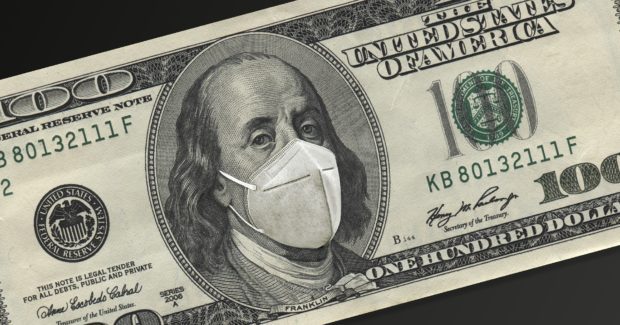Four Business-Management Best Practices the Pandemic Taught Metal Manufacturers
Last year’s unprecedented economic and supply chain challenges underscored gaps in commonsense contingency planning. Manufacturers that take heed of these lessons learned will be better prepared for whatever crisis may arise.
Posted: January 29, 2021
PROFIT MASTERY COLUMN
BY JULIE MURPHY
On March 18, 2020, to help quell the spread of the coronavirus, Detroit automakers announced a complete shutdown of operations in the U.S., Canada and Mexico, idling factories until at least March 30. Other manufacturers quickly followed suit, using the time to develop and implement new protocols for safely calling employees back to production and assembly lines.
While the temporary shutdowns caused significant disruptions in the supply chain for nearly every raw material and component, we’re now experiencing the pandemic’s longer-term impacts on the manufacturing sector:
- Increased investment in automation
*Reduces need for human interaction and contact
*Lessens the impact of absenteeism
*Increases flexibility in operations and production. - Changes in end-use product demand created opportunities for retooling.
- Increased emphasis on reshoring to lessen the impact of global turbulence.
- Shifts in product demand
*Increases in non-elective procedure medical equipment and personal protective equipment (PPE)
*Increased demand for technology and personal leisure equipment
*Decreased demand for aircraft parts and restaurant equipment.
Despite last year’s volatility and general pessimism, the U.S. manufacturing industry ended 2020 in good spirits. The Manufacturing Purchasing Managers Index (PMI) for January 2021 hit a 10-year high. While some supply chain delays and raw material shortages are still expected, it looks like 2021 will be better than 2020.
That makes this, the end of the first quarter of the new year, the ideal time to reflect on four lessons that emerged from last year’s unprecedented challenges. Implementing these best practices as the “new normal” evolves will render future disruptions far less disruptive.
Some Industries Truly Are Essential
The pandemic proved manufacturing is essential to the nation’s economic wellbeing. Despite raw material disruptions, the sector kept a portion of the population employed, while ensuring continued access to essential products and technology including personal protective equipment (PPE) and ventilators.
Lesson 1: Manufacturing is essential to the nation’s economic wellbeing.
Most Manufacturers Don’t Have Crisis Plans
While the long initial lockdown of 2020 was something no one could have foreseen, it became obvious that many companies and individuals struggled to adjust and survive.
Many companies were completely unprepared. They didn’t have infrastructure and equipment to accommodate work-from-home orders. They didn’t have contingency plans or back-up sources for raw materials, inventory or supplies. They didn’t have readily available cash reserves to tide them over, meet payroll or pay suppliers.
Much of their panic could have been mitigated – even avoided – if they’d developed and regularly revisited crisis plans. Crisis plans can be implemented in a variety of situations: medical emergencies; natural disaster, weather-related or Act of God emergencies; cyber-security attacks; incapacitation of company leaders; loss of critical customers or employees; and more. Specific action items will change depending on the situation, but having a starting point for discussion and action is critical.
Lesson 2: Develop a crisis plan for reference in any emergency situation. Discuss various situations and scenarios with key leaders. Establish basic action and communication steps and share them with responsible parties.
Many Manufacturers Aren’t Financially Prepared For Emergencies
Whether in crisis or not, many manufacturers lack the ability or resources to keep large cash reserves on hand. That’s why it’s prudent to work with more than one financial partner. Diversification is helpful, especially if one partner intimately understands your business, industry and equipment and can act and render credit decisions quickly and under uncertain macro conditions.
Because most companies aren’t financially prepared for crisis, many jumped on the first lifelines they were thrown: the federal Paycheck Protection Program (PPP) and loan extensions.
Because the PPP money was offered on a first-come, first-served basis and no one knew how long the money would be available, companies rushed to apply for the loans and banks were inundated with applications. This initial scramble overwhelmed financial institutions and caused processing delays and confusion.
In addition, PPP proceeds came with conditions and restrictions – especially if their full benefit could be realized. This left a significant need for additional sources of capital.
Lesson 3: Have more than one financial partner that intimately understands your business, industry and equipment and can provide credit quickly and efficiently in an emergency.
We Learned To Communicate And Conduct Business Differently
Because travel was restricted, and many companies had personnel working from home where possible, unscheduled drop-in cold calls and face-to-face meetings came to an abrupt halt. Many people were left wondering how they would do their jobs, help their customers and meet their sales quotas.
Thank goodness for technology! Adoption of technology was greatly accelerated due to the pandemic. Remote work-from-home computer stations to video chats, calls and meetings gave manufacturers a way to keep in touch with workers, clients and prospects.
The companies that have survived and are thriving are those that were able to accommodate, adapt and diversify.
Lesson 4: Manufacturers must have the flexibility and resources to adapt to changing conditions to continue to serve their customers.
Moving Into The Rest of 2021
Since the pandemic began, Commercial Credit Group (CCG) has helped companies overcome the economic and personal obstacles created by COVID-19 and allowed them to take advantage of the opportunities the economic disruption created. While other lenders have limited their lending and tightened their credit profiles, CCG continues to provide financing for equipment purchases and working capital.
As we head into the second quarter of 2021, the crisis isn’t over. There are still obstacles to hurdle and challenges to overcome. And let’s face it: Nothing is certain, so in essence, we’re always facing times of uncertainty. The best we can do is plan for the future, be as prepared as possible – and learn from the past.
This article originally appeared as a blog post on the Commercial Credit Group website: What We Learned From 2020 – A Year in Review.

















